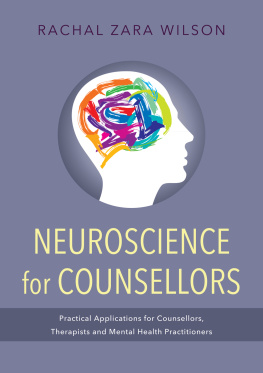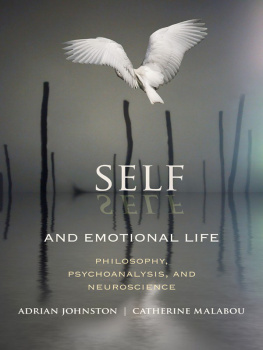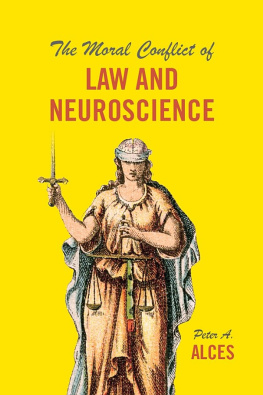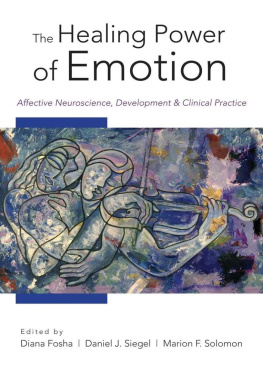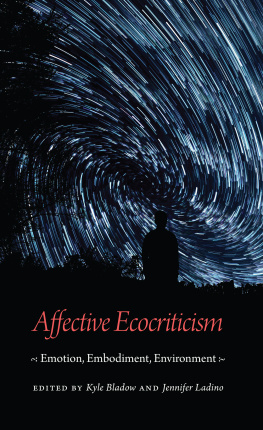Panksepp - Affective Neuroscience
Here you can read online Panksepp - Affective Neuroscience full text of the book (entire story) in english for free. Download pdf and epub, get meaning, cover and reviews about this ebook. year: 1998, publisher: Oxford University Press, Incorporated, genre: Romance novel. Description of the work, (preface) as well as reviews are available. Best literature library LitArk.com created for fans of good reading and offers a wide selection of genres:
Romance novel
Science fiction
Adventure
Detective
Science
History
Home and family
Prose
Art
Politics
Computer
Non-fiction
Religion
Business
Children
Humor
Choose a favorite category and find really read worthwhile books. Enjoy immersion in the world of imagination, feel the emotions of the characters or learn something new for yourself, make an fascinating discovery.

- Book:Affective Neuroscience
- Author:
- Publisher:Oxford University Press, Incorporated
- Genre:
- Year:1998
- Rating:3 / 5
- Favourites:Add to favourites
- Your mark:
- 60
- 1
- 2
- 3
- 4
- 5
Affective Neuroscience: summary, description and annotation
We offer to read an annotation, description, summary or preface (depends on what the author of the book "Affective Neuroscience" wrote himself). If you haven't found the necessary information about the book — write in the comments, we will try to find it.
Affective Neuroscience — read online for free the complete book (whole text) full work
Below is the text of the book, divided by pages. System saving the place of the last page read, allows you to conveniently read the book "Affective Neuroscience" online for free, without having to search again every time where you left off. Put a bookmark, and you can go to the page where you finished reading at any time.
Font size:
Interval:
Bookmark:
Affective Neuroscience
SERIES IN AFFECTIVE SCIENCE
Series Editors
Richard J. Davidson
Paul Ekman
Klaus Scherer
The Nature of Emotion: Fundamental Questions
Edited by Paul Ekman and Richard J. Davidson
Boo! Culture, Experience, and the Startle Reflex
by Ronald Simons
Emotions in Psychopathology: Theory and Research
Edited by William F. Flack, Jr. and James D. Laird
What the Face Reveals: Basic and Applied Studies of Spontaneous Expression Using the Facial Action Coding System (FACS)
Edited by Paul Ekman and Erika Rosenberg
Shame: Interpersonal Behavior, Psychopathology, and Culture
Edited by Paul Gilbert and Bernice Andrews
Affective Neuroscience: The Foundations of Human and Animal Emotions
by Jaak Panksepp
Extreme Fear, Shyness, and Social Phobia:
Origins, Biological Mechanisms,
and Clinical Outcomes
Edited by Louis A. Schmidt and Jay Schulkin
Cognitive Neuroscience of Emotion
Edited by Richard D. Lane and Lynn Nadel
The Neuropsychology of Emotion
Edited by Joan C. Borod
Anxiety, Depression, and Emotion
Edited by Richard J. Davidson
Persons, Situations, and Emotions: An Ecological Approach
Edited by Hermann Brandsttter and Andrzej Eliasz
Emotion, Social Relationships, and Health
Edited by Carol D. Ryff and Burton Singer
Appraisal Processes in Emotion: Theory, Methods, Research
Edited by Klaus R. Scherer, Angela Schorr, and Tom Johnstone
Music and Emotion: Theory and Research
Edited by Patrik N. Juslin and John A. Sloboda
Nonverbal Behavior in Clinical Settings
Edited by Pierre Philippot, Robert S. Feldman, and Erik J. Coats
Memory and Emotion
Edited by Daniel Reisberg and Paula Hertel
Psychology of Gratitude
Edited by Robert A. Emmons and Michael E. McCullough
Thinking about Feeling: Contemporary Philosophers on Emotions
Edited by Robert C. Solomon
Bodily Sensibility: Intelligent Action
by Jay Schulkin
Who Needs Emotions? The Brain Meets the Robot
Edited by Jean-Marc Fellous and Michael A. Arbib
The Foundations of Human and Animal Emotions
JAAK PANKSEPP


Oxford New York
Auckland Bangkok Buenos Aires Cape Town Chennai
Dar es Salaam Delhi Hong Kong Istanbul Karachi Kolkata
Kuala Lumpur Madrid Melbourne Mexico City Mumbai Nairobi
So Paulo Singapore Taipei Tokyo Toronto
Copyright 1998 by Oxford University Press, Inc.
Published by Oxford University Press, Inc.
198 Madison Avenue, New York, New York 10016
www.oup.com
First issued as an Oxford University Press paperback, 2005
Oxford is a registered trademark of Oxford University Press
All rights reserved. No part of this publication may be reproduced, stored in a retrieval system, or transmitted, in any form or by any means, electronic, mechanical, photocopying, recording, or otherwise, without the prior permission of Oxford University Press.
Library of Congress Cataloging-in-Publication Data Panksepp, Jaak.
Affective neuroscience : the foundations of human and animal emotions / Jaak Panksepp.
p. cm.(Series in affective science)
Includes bibliographical references and indexes.
ISBN 0-19-509673-8; 0-19-517805-X (pbk.)
1. Emotions. 2. Emotions and cognition. 3. EmotionsSocial aspects. 4. Psychobiology. 5. Psychology, Comparative. I. Title.
II. Series.
BF531.P35 1998
156.24dc21 98-15955
3 5 7 9 8 6 4 2
Printed in the United States of America on acid-free paper
I dedicate this book to my lost child, Tiina, and my friend Anesa, who supported me when I was in need.
When the world came down upon me
and the sky closed like a door,
sounds filled my ears from far away.
I lay down on the floor.
And no one near could find me,
and nothing near was mine.
I sank into the floorboards
from the voices, soft and kind.
Until one thought got through to me,
one image filled my mind:
a pencil and a paper lying
close to hand, nearby.
Somehow I took them up and traced
one word and then the next,
until they linked together in a chain
that first perplexed the darkness
in my eyes, then,
rowing on my paper barque,
I soon was far away
and saw the water trail Id left
rise up into a chain
a ladder reaching high above
to light and sound and friends.
And thats how I climbed out
of the grief that has no end.
Anesa Miller,
A Road Beyond Loss, 1995
This book was written with the student firmly in mind, but it is not a traditional textbook. It is an attempt to clarify the interrelations between brain and mind as expressed in the fundamental emotional processes that all mammals share. I will explore how our knowledge of the animal brain can help clarify the affective nature of the human mind and how our ability to appreciate the basic emotions of the human mind helps us understand the functional organization of the mammalian brain. This borderland of knowledge between the many disciplines that study the animal brain and the human mindthe various subareas of neuroscience and behavioral biology and the many schools of psychology and philosophyshould be rich in intellectual commerce. Unfortunately, this is not so. At present, these disciplines are only slowly being introduced to each other, like Europe and the Far East a millennium ago, and xenophobia prevails. Just as the trade routes between those distant cultures were opened slowly by explorers and adventurers, interchange between the disciplines that view human nature from above (i.e., the viewpoint of our recently evolved rational and cultural mind) and those that view it from below (the ancient networks of our brains) remains tortuous and unsatisfactory. This book offers one view of how the needed trade routes may be constructed in the area of emotions and motivations.
A motive of the old explorers was adventure under the guise of economicsthe search for new vistas and knowledge in behalf of what is useful. The motives that underlie the writing of this book are the same. The aim is to enrich our knowledge about the brain/mind interface, but the more primal motive is the adventure of exploring uncharted spaces. At times, the conceptual paths of the brain/mind charts presented here will be like the routes on ancient maps that never really depicted the immensity of the journey. At present, ignorance is more abundant than knowledge in this field, often forcing me to oversimplify in order to formulate any coherent ideas and explanations at all. It will be a while before we have a true and lasting science of emotions as opposed to the fragmentary knowledge that now exists. But instead of just summarizing a patchwork of existing theories that are endemic in the field, I will aspire to provide a cohesive map to guide future navigations. We are still in the early stages of analyzing the psychobiology of emotions, and many additional generations of careful work will be needed before we have precise maps.
This book is dedicated to a new synthetic psychology of the future that will be more catholic than the present variantsone that will be built jointly on evolutionary, neuroscientific, behavioristic, affective, and cognitive foundations. I will attempt to take nature on its own terms by coming to grips with those intrinsic, ancient processes of the brain/mind that mediate between environmental events and the natural classes of action tendencies that animals spontaneously generate in the real world. The basic premise here is that the brain is a symbolic organ that reflects an evolutionary epistemology encoded in our genes. The mammalian brain not only represents the outside world in symbolic codes based on the properties of its sensory-perceptual systems but also has intrinsic operating systems that govern ingrained psychobehavioral tendencies for coping with those ever-present challenges that our ancestors confronted in their evolution. Many of these operating systems arouse emotional states, which are probably internally felt by other animals in ways not that different from humans. While modern neuroscience has achieved great success in deciphering the anatomical and physiological substrates of many sensory and motor processes at the neuronal level, it has made only a modest beginning in deciphering the functional characteristics of that great intermediate net that intervenes between inputs and outputs. Here, I advocate the position that many intervening neuropsychological processes, such as the basic emotions, can now be understood in neuroanatomical, neurophysiological, and neurochemical terms. But that level of understanding does require more theorizing and utilization of indirect evidence than is common in the field.
Next pageFont size:
Interval:
Bookmark:
Similar books «Affective Neuroscience»
Look at similar books to Affective Neuroscience. We have selected literature similar in name and meaning in the hope of providing readers with more options to find new, interesting, not yet read works.
Discussion, reviews of the book Affective Neuroscience and just readers' own opinions. Leave your comments, write what you think about the work, its meaning or the main characters. Specify what exactly you liked and what you didn't like, and why you think so.



